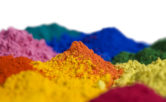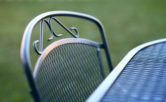
Follow These Pre-Treatment Processes in Your Powder Coating Services for Best Results
There’s a Latin saying which translates to “victory loves preparation.” These words are very relevant when it comes to powder coating, where we know that only an excellent pre-treatment process can result in a beautiful, uniform, durable powder coating finish.
However, pretreatment is a wide topic that takes some knowledge and experience to navigate. The exact processes you follow will vary from project to project depending on the items being powder-coated and the expected performance objectives. Unless you decide to go with outsourced powder coating services, you will need to follow these key stages of effective pretreatment to ensure that you get a satisfactory finish every time.
1. Decide What Pretreatment Processes to Use
Before you start sandblasting and dipping things in acid, it’s important to come up with an objective for what and why you’re powder coating. For one, the substrate (material you want to coat) will determine the type of pretreatment processes and materials you will use.
- Ferrous materials such as steel and cast iron require special rust and corrosion protection in the form of iron phosphate sealer
- Aluminum materials will receive pretreatment based on whether it is cast, extruded, or stainless. The oxide layer commonly found on aluminum surfaces also needs to be stripped before powder coating so that adhesion occurs with the bare metal surface
- Zinc-coated metal can be galvanized or hot-dip galvanized. Galvanized metal is very easy to prepare for powder coating, a duplex coating can ensure proper adhesion and preparation for powder coating. Duplex coating involves sweet abrasive blasting over the substrate, pretreatment, zinc primer base coating and top coat. Hot-dip galvanized metal will require an additional pre-baking or heat-drying step to remove air and moisture from the substrate surface. These can cause bubbles and pits on the finished product, which will reduce the lifetime and effectiveness of the powder coat
- Mixed metals — metal alloys are typically easy to powder coat, especially steel alloys. However, since these mixed metals can have different properties from their individual component metals, more care needs to be taken to ensure proper adherence to the metal surface
- Plastics — Plastics, resins, and similar materials will not be good candidates for conventional powder coating unless they can withstand the 400F curing process. Instead, these require a special UV-cured powder coating
Second, the type of product you want to powder coat will determine what kind of pretreatment you will perform. Welded, milled, and cut surfaces pose extra challenges due to the presence of scale and soils (surface dirt and impurities), which require extra cleaning stages.
The presence of sharp surfaces also makes it harder for powder paint to adhere to the surface, and some managers often decide to do some grinding and smoothing first. Applying a special sealant such as zirconium oxide or iron phosphate also helps with adhesion on sharp surfaces.
Finally, the performance characteristics needed to meet customer expectations will determine the type of pretreatment. Objects used in highly corrosive marine environments will require extra rust and corrosion resistance, while outdoor powder coating will need protection from UV rays and weather damage. In some cases, indoor surfaces will require microbial powder coating and clear film for extra protection.
The point is, you will need to tailor your pretreatment processes to the particular material and performance needs to meet customer expectations.
2. Cleaning
The first step of pretreatment is cleaning, and it is the most important of all. You have to remove surface soils, grime, grease, and dirt to ensure that the powder coat will adhere properly to the material.
There are many ways to clean materials prior to powder coating ranging from simple pressure washing to multi-stage acid baths and sophisticated media blasting.
Degreasing: Washing, Pressure Washing
The first step to prepare a surface for powder coating is to wash away surface soils. Clean, reverse osmosis or deionized water should be used to remove dirt, dust, grime, and grease from the substrate. For tougher soils, you can use a pressure cleaner to remove them mechanically. Alkaline and phosphates heated conversion coatings are also recommended.
Surface Preparation: Media Blasting
The correct term for sand blasting is media blasting or abrasive blasting, an abrasive cleaning process that involves shooting tiny solid particles at high velocity against a surface. These particles erode away surface soils and prepare the surface for the application of powder coating.
There are various types of abrasive media (material) you can use for media blasting depending on your needs.
- Steel grit made from crushed ball bearings is used on non-magnetic steel surfaces to create the right surface pitting pattern for powder coat adherence
- Glass bead blasting uses tiny, smooth glass particles that polish the surface of the object. It results in a matte of satin finish
- Soda blasting uses bicarbonate soda to blast delicate surfaces. Because of its extremely small particles, soda removes rust and surface soils without damaging the metal surface
Other forms of abrasive cleaning include grinding, bristle blasting, and sanding, all of which serve to expose a fresh metal surface to which the powder coat particles can adhere.
Chemical Cleaning
Also called wet stripping, chemical treatment is used to remove organic soils such as mill oils, machining coolants, and forming lubricants. An acid cleaner helps to dissolve these soils and rust, but the use of harsh chemicals can weaken the object being treated and reduce its lifespan. Chemicals tend also to be dangerous, so you should only use them if you have to.
At AR Iron LLC, we use TACT to define our cleaning process. TACT stands for Time, Action, Concentration (Chemical), and Temperature, which are the four factors that determine what cleaning processes we follow, what media we use, for how long, and under what conditions. The result is that we always ensure the best cleaning while protecting the products and minimizing costs.
3. Rinsing
The rinsing stage follows wet stripping to remove the remnants of chemicals or cleaning solutions used on the object. These chemicals can contaminate the powder coating and make it less effective, which eventually results in delamination and severely reduced service life.
Rinsing is usually done with water. Most people prefer to use city or well water, but it may contain chlorides or sulphates which are corrosion initiators. We recommend deionized (DI) or reverse osmosis filtered water (RO) that has had impurities and unwanted ions removed.
After rinsing, you can choose to air-dry or oven-dry the object. With most ferrous materials, there is high risk of further contamination from atmospheric corrosion or flash rusting, so oven drying followed by immediate powder coating is highly recommended.
Iron-Phosphate Sealer
Phosphate pretreatment is also called phosphatizing, a process that deposits a layer of metal substrate and phosphate onto the surface of the object being treated. This additional layer serves two major functions.
- The phosphate layer increases corrosion resistance because it forms an inert surface, protecting the metal underneath
- It textures the surface with microscopic pits to which the powder paint can adhere. Thus, it improves the powder coat finish and lasts much longer.
Two types of phosphate sealers can be used: Iron phosphate sealing is the more economical option that produces a very durable finish, while zinc phosphate is more expensive. You can also use zirconium oxide depending on your unique needs. After phosphatizing, another rinse stage will be required.
Consult Experts
A good coating will never come from poor pre-treatment, but good pre-treatment sets the stage for an excellent powder coating. With all the different factors involved in pretreatment, every project will have to be customized for maximum customer satisfaction.
At AR Powder Coating, our pride is in ensuring top-notch services and exceeding your expectations. Reach out to us for the best powder coating services in all of Nevada, Las Vegas, and Henderson.




